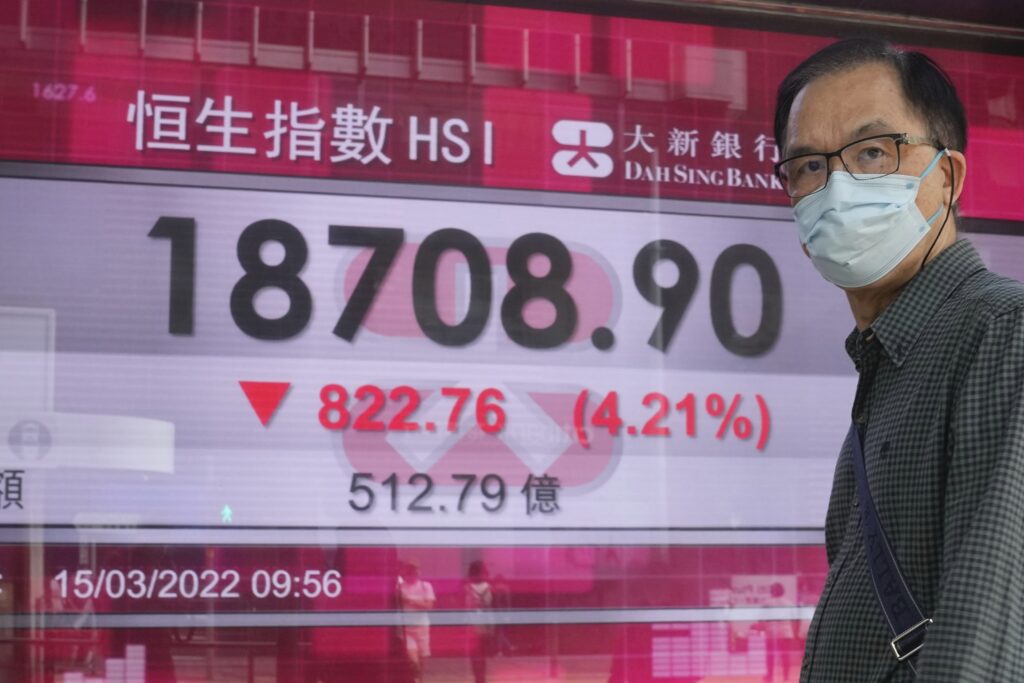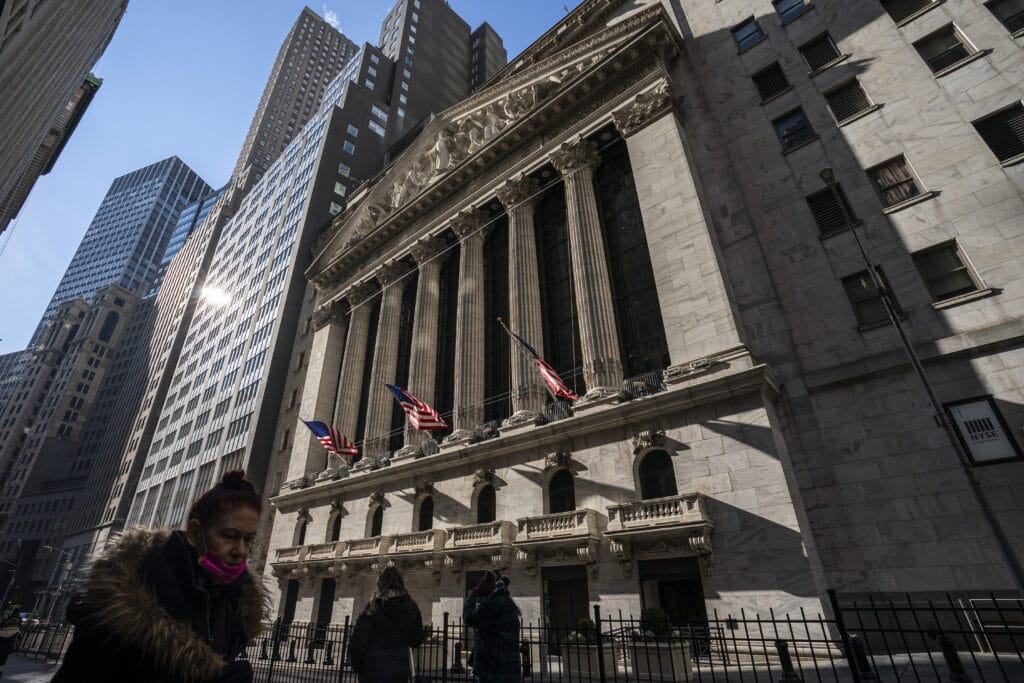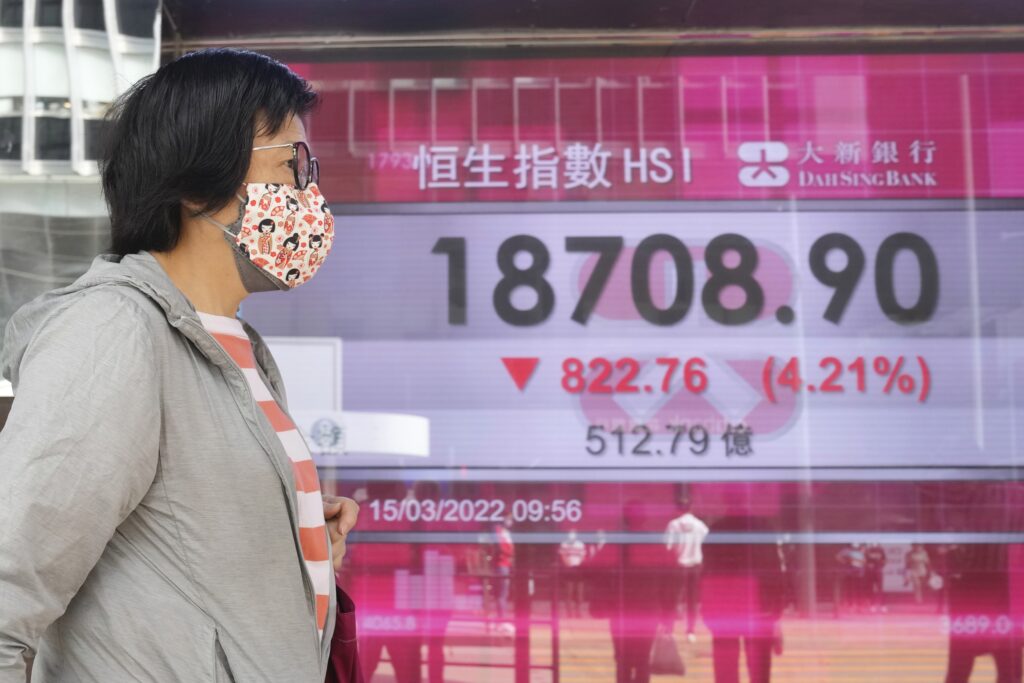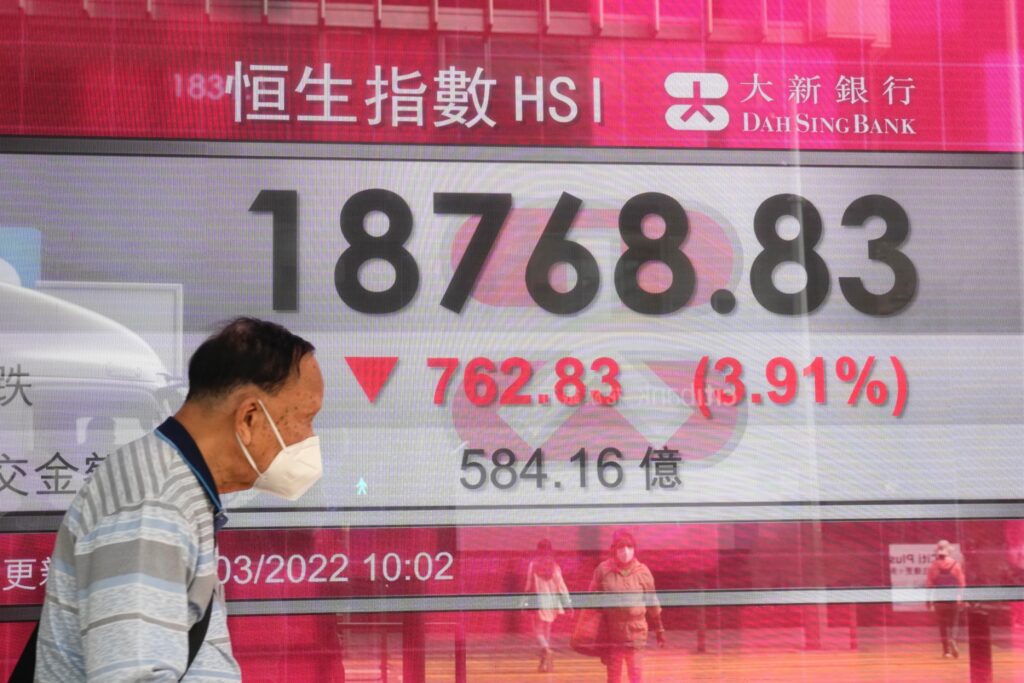The wilder action was in oil and Asian stock markets, where tightening anti-COVID measures in China are raising worries about demand for energy and about disruptions to manufacturing and global trade. The renewed worries about COVID-19 are piling on top of an already lengthy list of concerns for markets, which have caused wild hour-to-hour swings in recent weeks. As reported by the AP:
Central banks around the world, meanwhile, are preparing to pull the plug on the support they poured into the global economy after the pandemic struck
NEW YORK (AP) — Stocks are ticking higher on Wall Street Tuesday as inflation worries ebb a bit and oil prices slide sharply for a second day.

The S&P 500 was 0.7% higher in early trading after a report showed inflation’s rapid acceleration took a pause at the wholesale level last month. The Dow Jones Industrial Average was up 166 points, or 0.5%, at 33,111, as of 10:10 a.m. Eastern time, and the Nasdaq composite was 1% higher.
The wilder action was in oil and Asian stock markets, where tightening anti-COVID measures in China are raising worries about demand for energy and about disruptions to manufacturing and global trade. Oil prices tumbled more than 8%, and a barrel of U.S. crude fell below $95 after starting the week above $109. Stocks in Hong Kong sank more than 5% for a second straight day after the neighboring city of Shenzhen was ordered into a shutdown.
The renewed worries about COVID-19 are piling on top of an already lengthy list of concerns for markets, which have caused wild hour-to-hour swings in recent weeks. The war in Ukraine has catapulted prices for oil, wheat, and other commodities where the region is a major producer. That’s raising the threat that already high inflation will persist and combine with a potentially stagnating economy.

Central banks around the world, meanwhile, are preparing to pull the plug on the support they poured into the global economy after the pandemic struck. The Federal Reserve is beginning a two-day meeting on interest rates, and the wide expectation is that it will announce on Wednesday an increase of 0.25 percentage points to its key short-term rate.
That would be the first increase since 2018 and likely the first in a series of rate hikes. The Fed is trying to slow the economy enough to tamp down the high inflation sweeping the country, but not so much as to trigger a recession.
Inflation is already at its highest level in generations, and the most recent numbers don’t even include the surge in oil prices that occurred after Russia invaded Ukraine.
Data released Tuesday showed inflation was still very high at the wholesale level last month, but at least it wasn’t accelerating. Producer prices were 10% higher in February from a year earlier, holding the year-over-year inflation rate steady. On a month-to-month basis, inflation rose 0.8% in February from January, versus forecasts for 0.9%. That’s a slowdown from January’s 1.2% month-over-month inflation.

So the numbers are still very high and will keep the Fed on track to raise rates on Wednesday, economists said, but at least they weren’t worse than expected.
Treasury yields dipped immediately after the report. The yield on the 10-year Treasury fell to 2.08% from 2.14% late Monday. The two-year yield, which moves more on expectations for Fed policy changes, fell to 1.80% from 1.87%.
Also helping to pull down yields were the tumbling oil prices. A barrel of U.S. crude dropped 8.2% to $94.56. It had briefly topped $130 last week when worries about disruptions to supplies because of the war in Ukraine were at their height. Brent crude, the international standard, fell 7.2% to $99.25 per barrel.
A reprieve on fuel prices helped a wide variety of stocks, and the majority of companies in the S&P 500 were rising. Delta Air Lines helped lead the way after soaring 7.6%. It raised its forecast for revenue this quarter. United Airlines climbed 7.5% after it said revenue this quarter would be near the better end of its forecasted range.
In overseas stock markets, European indexes were down modestly. Stocks in Shanghai slumped 5% and Hong Kong’s Hang Seng lost 5.7% despite the release of data showing strong increases in Chinese retail sales, industrial production, and investment in January-February. It followed a decision by China’s central bank not to ease interest rates to spur economic growth.
Shares in Hong Kong have sunk to near six-year lows after the neighboring city of Shenzhen was ordered into a shutdown to combat China’s worst COVID-19 outbreak in two years.

“Fears continue to dog stock markets that lockdowns could spread, which would severely impact China’s growth,” Jeffrey Halley of Oanda said in a commentary.
In other developments, the London Metal Exchange said trading in nickel will resume Wednesday, just over a week after it was suspended when the price of the metal skyrocketed to over $100,000 per ton.
The announcement followed a notice from Tsingshan Holding Group, a Chinese metals giant, that it had struck a deal with its creditors on a “standstill arrangement” such that the banks would not make margin calls or close out their positions against the company while it is resolving its nickel margin and settlement requirements.
Russia is the world’s No. 3 producer of nickel. Its price and that of many other commodities has surged on speculation over possible disruptions to supplies as Russia contends with widening economic sanctions following its invasion of Ukraine.
By STAN CHOE Business Writer
Business Writer Elaine Kurtenbach contributed.






